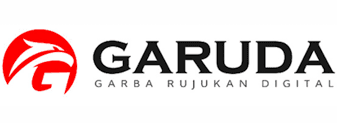Assessing Foreign Language Learners in Online Learning: Methods, Challenges and Strategies
Abstract
This paper is aimed at analysing methods, challenges and strategies of online assessment for foreign language learners during the Covid-19 Pandemic at a higher educational setting. The online questionnaires were distributed to lecturers of English Department of Nusa Cendana University. It was revealed that the lecturers assessed students’ language skills by project, quiz, exam, written assignment, online discussion and presentation. The main challenge was ineffective nature of online assessment because it cannot measure students’ language skills comprehensively and was prone to academic dishonesty. Various technical issues such as time management, Internet connection and miscommunication were faced by the English lecturers as well. However, they also applied several strategies to overcome those challenges including changing scoring system, lowering the standard, giving students extra time to complete the assignment, using online testing tools to score and store the assignment, instructing the assignment via video conference such as Zoom to avoid miscommunication. It is expected that lecturers are able to use various kinds of methods to assess their students’ foreign language abilities and to be able to overcome every challenge they encounter by applying meaningful strategies.
Downloads
References
Baker, D. L. (2011). Designing and orchestrating online discussions. MERLOT Journal of Online Learning and Teaching, 7(3), 401-411.
Beebe, R., Vonderwell, S., & Boboc, M. (2010). Emerging patterns in transferring assessment practices from F2F to online environments. Electronic Journal of e-Learning, 8(1), 1-12.
Gaytan, J., & McEwen, B. (2007). Effective online instructional and assessment strategies. The American Journal of Distance Education, 21(3), 117-132.
Inoue, W. P. (2018). Belief in foreign language learning and satisfaction with using Google Classroom to submit online homework of undergraduate students. The International Conference on Business and Industrial Research (ICBIR).
Joughin, G. (2010). The hidden curriculum revisited: A critical review of research into the influence of summative assessment on learning. Assessment and Evaluation in Higher Education, 35(3), 335- 345.
Kearns, L. R. (2012). Student Assessment in Online Learning: Challenges and Effective Practices. MERLOT Journal of Online Learning and Teaching, 8(3), 198-208.
Kelum, A. A., Gamage, E., & Gunawan, N. (2020). Online Delivery and Assessment during COVID-19: Safeguarding Academic Integrity. Education Sciences, 10(301), 1-24.
Kennedy, K., Nowak, S., Raghuraman, R., Thomas, J., & Davis, S. (2000). Academic dishonesty and distance learning: Student and faculty views. College Student Journal, 34(2), 309-314.
Kerka, S., & Wonacott, M. (2000). Assessing learners online: Practitioner file. In C. (Ed.). OH: ERIC Clearinghouse on Adult, Career, and Vocational Education.
Kim, N., Smith, M., & Maeng, K. (2008). Assessment in online distance education: A comparison of three online programs at a university. Online Journal of Distance Learning Administration, 11(1), 1-17.
Meyer, K. A. (2006). The method (and madness) of evaluating online discussions. Journal of Asynchronous Learning Networks, 10(4), 83-97.
Rovai, A. P. (2000). Online and traditional assessments: what’s the difference? Internet and higher education, 3(1), 141-¬151.
Sun, S. Y. (2011). Online Language Teaching: the Pedagogical Challenges. Knowledge Management & E-Learning. An International Journal, 3(3), 428-447.
Vonderwell, S., Liang, X., & Alderman, K. (2007). Asynchronous discussion and assessment in online learning. Journal of Research on Technology in Education, 39(3), 309-328.

 Leni Amelia Suek(1*)
Leni Amelia Suek(1*)










